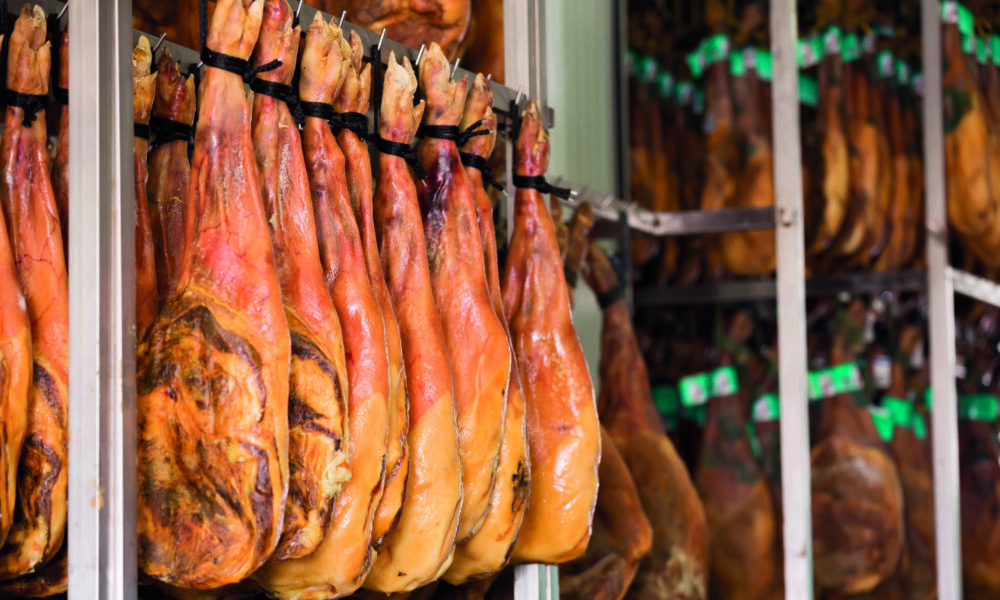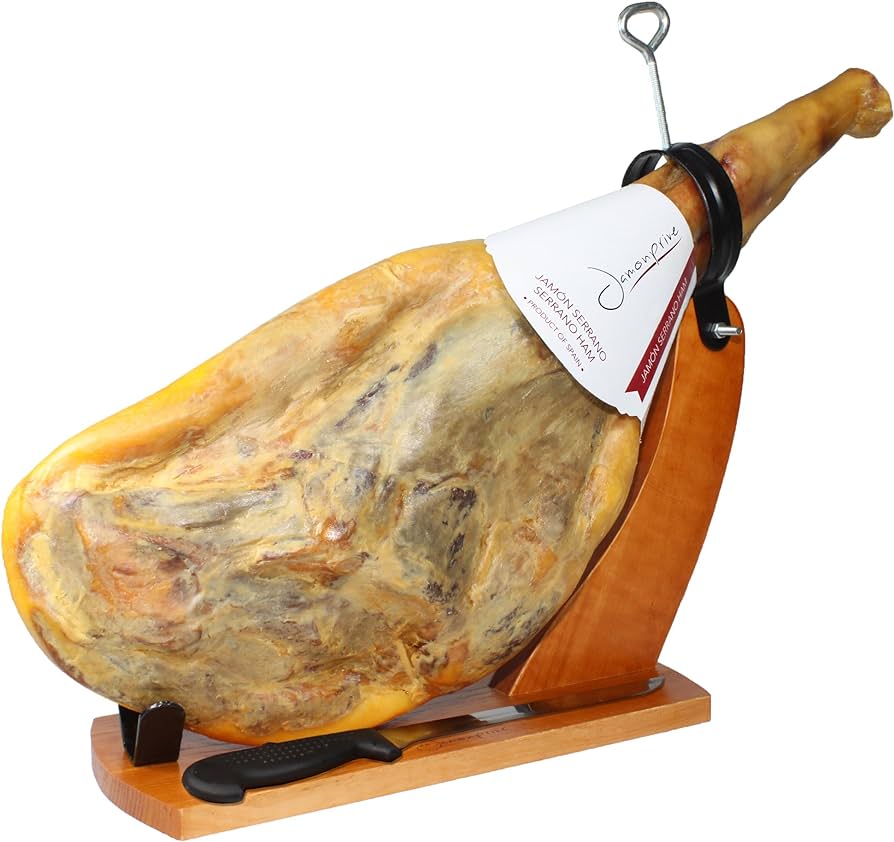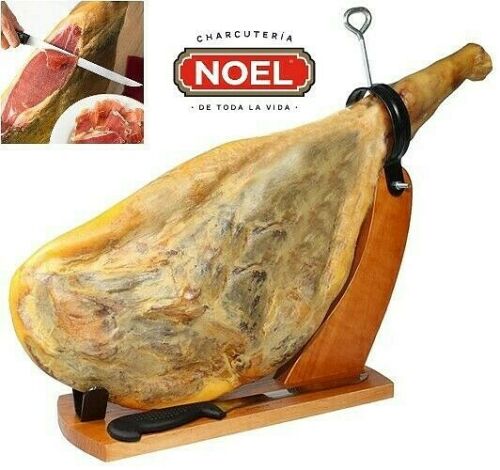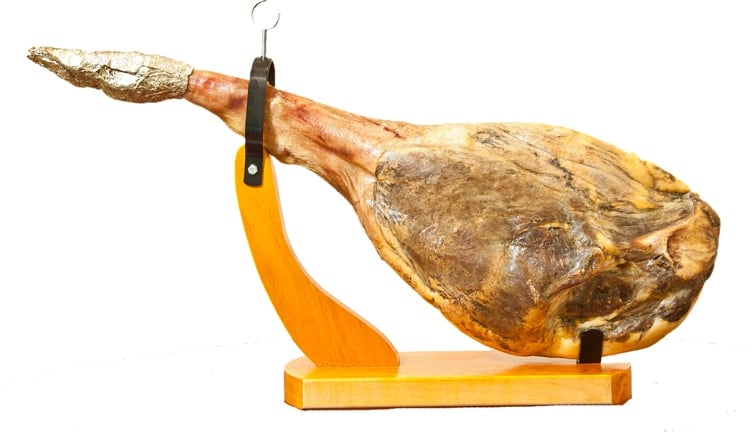Introduction

Spanish cured meats are renowned for their rich flavors, savory profiles, and centuries-old traditions. Two popular types of Spanish ham, Serrano and Iberico, offer unique taste experiences that have captivated meat lovers around the world. While both hams originate from Spain and undergo a similar curing process, they have distinct characteristics that set them apart. This article aims to compare and contrast Serrano and Iberico ham, exploring their origins, production methods, flavor profiles, nutritional value, and culinary uses. Whether you’re a connoisseur or new to Spanish cured meats, understanding the differences between Serrano and Iberico can help you make an informed choice for your next culinary adventure.
Introduction To Spanish Cured Meats
Spanish cured meats have a long-standing tradition and are celebrated for their distinct flavors and artisanal craftsmanship. These meats, such as Serrano and Iberico ham, are expertly cured and aged to perfection, resulting in a rich, savory taste that is beloved by meat enthusiasts worldwide. The curing process involves salting, drying, and sometimes smoking the meat, which enhances its flavors and extends its shelf life. Spaniards have mastered the art of curing meats, and their passion for quality and craftsmanship is evident in every bite. Whether enjoyed on its own, in sandwiches, or as a flavorful addition to various dishes, Spanish cured meats are an essential part of the country’s culinary heritage.
Brief History Of Serrano And Iberico
Serrano and Iberico are both types of Spanish cured meats with a rich history. Serrano ham has been produced in Spain for centuries, with records dating back to the Roman Empire. It was traditionally made by salting and air-drying the meat in the mountainous regions of Spain. On the other hand, Iberico ham has a more recent history, with its origins in the southwestern region of Spain. It gained popularity in the 19th century due to advancements in pig farming techniques. Today, both Serrano and Iberico ham continue to be highly regarded for their quality and distinct flavors. Their historical significance and culinary importance make them staples of Spanish cuisine.
Serrano Ham

Serrano Ham, also known as Jamón Serrano, is a type of Spanish cured meat that has a distinct flavor and texture. It is made from the meat of white pigs and is typically pink in color. Serrano ham is produced by salting and air-drying the meat in the mountainous regions of Spain, which gives it a rich, savory taste. Its texture is firm and slightly oily, making it perfect for slicing thin and enjoying as a tapas dish or in sandwiches. Serrano ham is a staple in Spanish cuisine and is highly regarded for its quality and versatility.
Serrano Ham: Origin And Production Process
Serrano Ham, also known as Jamón Serrano, originates from Spain and is produced through a meticulous process. The ham is made from the meat of white pigs, specifically the Landrace or Large White breeds. After the pigs are raised in the mountainous regions of Spain, their hind legs are carefully salted and left to air-dry for a period of several months to years. The unique combination of the pigs’ breed, diet, and the traditional curing process gives Serrano Ham its distinctive flavor and texture. It is widely regarded as a staple in Spanish cuisine and a testament to the country’s rich culinary heritage.
Serrano Ham: Flavor Profile And Texture
Serrano Ham boasts a distinct flavor profile and texture that sets it apart from other cured meats. It has a savory and slightly salty taste, with hints of nuttiness and sweetness. The meat is known for its firm, yet tender texture, making it easy to slice and enjoy. The flavor intensifies as the ham ages, developing deeper complexities. The higher salt content in Serrano Ham contributes to its unique taste and acts as a natural preservative during the curing process. Its texture is rich and smooth, providing a satisfying mouthfeel with each bite.
Iberico Ham

Iberico Ham, also known as Jamón Ibérico, is a highly prized Spanish cured meat. It is made from the meat of Iberian pigs, which are a unique breed native to the Iberian Peninsula. Iberico Ham is known for its rich and intense flavor, with notes of nuttiness and sweetness. The meat is marbled with fat, giving it a luscious and velvety texture. There are different grades of Iberico Ham based on the pigs’ diet and lifestyle, ranging from acorn-fed (Bellota) to grain-fed (Cebo). The higher the grade, the more intricate and complex the flavor profile. Enjoyed worldwide, Iberico Ham is a true delicacy.
Iberico Ham: Differences In Quality And Taste
Iberico Ham stands out for its superior quality and unique taste. The main difference lies in the breed of pigs used – Iberian pigs, which are native to the Iberian Peninsula. These pigs have a specific genetic composition and are known for their ability to accumulate intramuscular fat. This marbling of fat gives Iberico Ham its distinct taste and succulent texture. The quality of Iberico Ham is also influenced by the pigs’ diet, with acorn-fed (Bellota) Iberico Ham being the highest grade and offering an even more complex flavor. The result is a rich, nutty, and melt-in-your-mouth experience.
Iberico Ham: Grading System And Varieties
Iberico Ham is graded based on the pigs’ diet and the length of their acorn feeding period. The grading system consists of three categories:
- Bellota: This is the highest grade of Iberico Ham, where the pigs roam freely in the oak forests and feast on acorns (bellota) during the montanera season. Bellota Iberico Ham has a rich and intense flavor.
- Recebo: This grade indicates that the pigs were both acorn-fed and supplemented with grains. Recebo Iberico Ham has a slightly milder flavor compared to Bellota.
- Cebo de Campo: The pigs in this grade are raised in an extensive system and fed a diet of both grains and natural resources. Cebo de Campo Iberico Ham has a balanced flavor with a hint of sweetness.
Each grade offers a unique taste profile, allowing consumers to choose according to their preferences.
Nutritional Value

When it comes to the nutritional value of Spanish cured meats, there are some differences between Serrano and Iberico hams. Serrano ham has fewer calories compared to Iberico ham, making it a lighter option. However, Iberico ham is packed with high-quality proteins, making it a more nutrient-dense choice. Both hams are a good source of essential vitamins and minerals, including iron, zinc, and B vitamins. Incorporating Spanish cured meats into your diet can provide you with the benefits of protein and essential nutrients.
Nutritional Comparison Of Serrano And Iberico Hams
When it comes to the nutritional value of Spanish cured meats, there are some differences between Serrano and Iberico hams. Serrano ham has fewer calories compared to Iberico ham, making it a lighter option. However, Iberico ham is packed with high-quality proteins, making it a more nutrient-dense choice. Both hams are a good source of essential vitamins and minerals, including iron, zinc, and B vitamins. Incorporating Spanish cured meats into your diet can provide you with the benefits of protein and essential nutrients.
Health Benefits Of Consuming Spanish Cured Meats
Spanish cured meats, such as Serrano and Iberico hams, offer numerous health benefits. They are a rich source of high-quality proteins, essential for muscle growth and repair. These meats also contain important vitamins and minerals, including iron, zinc, and B vitamins, which support energy production and enhance immune function. Additionally, Spanish cured meats are low in carbohydrates, making them suitable for those following a low-carb diet. The moderate consumption of these meats can contribute to a well-balanced diet, providing nutritional value and a delicious addition to meals.
Culinary Uses

Culinary Uses: Serrano and Iberico hams are versatile ingredients that can be enjoyed in a variety of ways.
- Serrano ham is commonly sliced thinly and enjoyed on its own or as part of a charcuterie board. It adds a salty and savory flavor to salads, sandwiches, and pasta dishes.
- Iberico ham, with its rich and complex flavors, is often savored on its own or paired with other ingredients such as melon, figs, or cheese. It can be used to enhance the flavors of stews, soups, and risottos.
Both hams are commonly used in Spanish tapas, providing a delicious and distinct taste to any dish. Enjoy them alongside other Spanish delicacies such as olives, cheeses, and crusty bread.
Traditional Ways To Enjoy Serrano And Iberico Hams
Serrano and Iberico hams can be enjoyed in various traditional ways. Serrano ham is often sliced thinly and served on its own or as part of a charcuterie board. Its salty and savory flavor adds a delicious touch to salads, sandwiches, and pasta dishes. On the other hand, Iberico ham, with its rich and complex flavors, is savored on its own to fully appreciate its unique taste. It can also be paired with other ingredients such as melon, figs, or cheese to enhance its flavors. Both hams are commonly used in Spanish tapas alongside olives, cheeses, and crusty bread.
Pairing Suggestions For Serrano And Iberico Hams
When it comes to pairing Serrano and Iberico hams, there are endless possibilities to enhance their flavors. For Serrano ham, try serving it alongside fresh melon slices for a refreshing and sweet combination. The saltiness of Serrano ham also pairs well with the creaminess of cheeses such as Manchego or goat cheese. As for Iberico ham, it can be enjoyed on its own to fully appreciate its complex taste. However, if you want to elevate the experience, try pairing it with figs, which complement the rich flavors of the ham. Additionally, a glass of Spanish red wine is always a classic choice to accompany both hams.
Conclusion

In conclusion, the comparison between Serrano and Iberico hams reveals the unique characteristics and flavors that each type offers. Serrano ham, with its versatility and accessibility, is a popular choice for many. On the other hand, Iberico ham stands out as a delicacy, known for its rich and complex taste. Ultimately, the choice between Serrano and Iberico ham comes down to personal preference and budget. Whichever option you choose, indulging in the delights of Spanish cured meats is sure to be a flavorful and memorable experience.
Key Differences Between Serrano And Iberico Hams
Serrano and Iberico hams differ in several key aspects. Firstly, the type of pig used is different, with Serrano ham typically made from white pigs and Iberico ham coming from the black Iberian pig. This leads to variations in flavor and texture. Iberico ham is known for its rich, nutty flavor and melt-in-your-mouth texture due to its higher fat content. In contrast, Serrano ham has a saltier taste and a less succulent texture. Additionally, Iberico hams are often aged for a longer time, resulting in a more complex and intense flavor profile. Ultimately, the choice between Serrano and Iberico ham depends on personal preference for flavor and texture.
Choosing The Best Spanish Cured Meat For Your Preferences
When it comes to choosing the best Spanish cured meat for your preferences, it ultimately comes down to your personal taste and texture preferences. If you enjoy a milder flavor and less fatty texture, Serrano ham may be the right choice for you. On the other hand, if you crave a more intense, nutty flavor and a melt-in-your-mouth texture, Iberico ham is the way to go. Consider the different flavors and textures, as well as the price differences, to make an informed decision and truly savor the authentic flavors of Spanish cured meats.
FAQ About Serrano Vs Iberico: Comparing Spanish Cured Meats
Q: What is the main difference between Serrano and Iberico cured meats?
A: The main difference lies in the type of pigs used. Serrano ham comes from white pigs, while Iberico ham comes from a specific breed of black Iberian pigs.
Q: Does the pig breed affect the taste of the cured meats?
A: Yes, the breed of the pig greatly influences the flavor and texture of the meat. Iberico ham is known for its richer flavor and marbled appearance due to the pigs’ unique diet.
Q: Are there differences in terms of cost between Serrano and Iberico cured meats?
A: Generally, Iberico cured meats are more expensive than Serrano due to the rarity of the Iberian pig breed and the traditional methods used in its production.
Q: How do the curing processes differ between Serrano and Iberico meats?
A: Both types of cured meats undergo a similar process of salting and aging, but Iberico ham typically undergoes a longer curing period to develop its distinctive flavor.
Q: Which type of cured meat is more widely available in the market?
A: Serrano ham is more commonly found in the market and is often considered a more accessible option compared to the premium Iberico ham.
Q: Can Serrano and Iberico cured meats be used interchangeably in recipes?
A: While both types of cured meats can be used in various dishes, Iberico ham is prized for its complex flavors and is often enjoyed on its own to fully appreciate its unique taste profile.

Marine Bay Restaurant received the International Food Culture Award 2019 as the Best Szechuan & Hunan Restaurant, enjoying a reputation in North America. Renowned for the tunnel, authentic, and cheap. Known as “Human Taste First Garden,” 2013 Vancouver culinary first book named “Best Chuan Xiang Outlets,” significant temperature and China Eastern Airlines designated outlets.